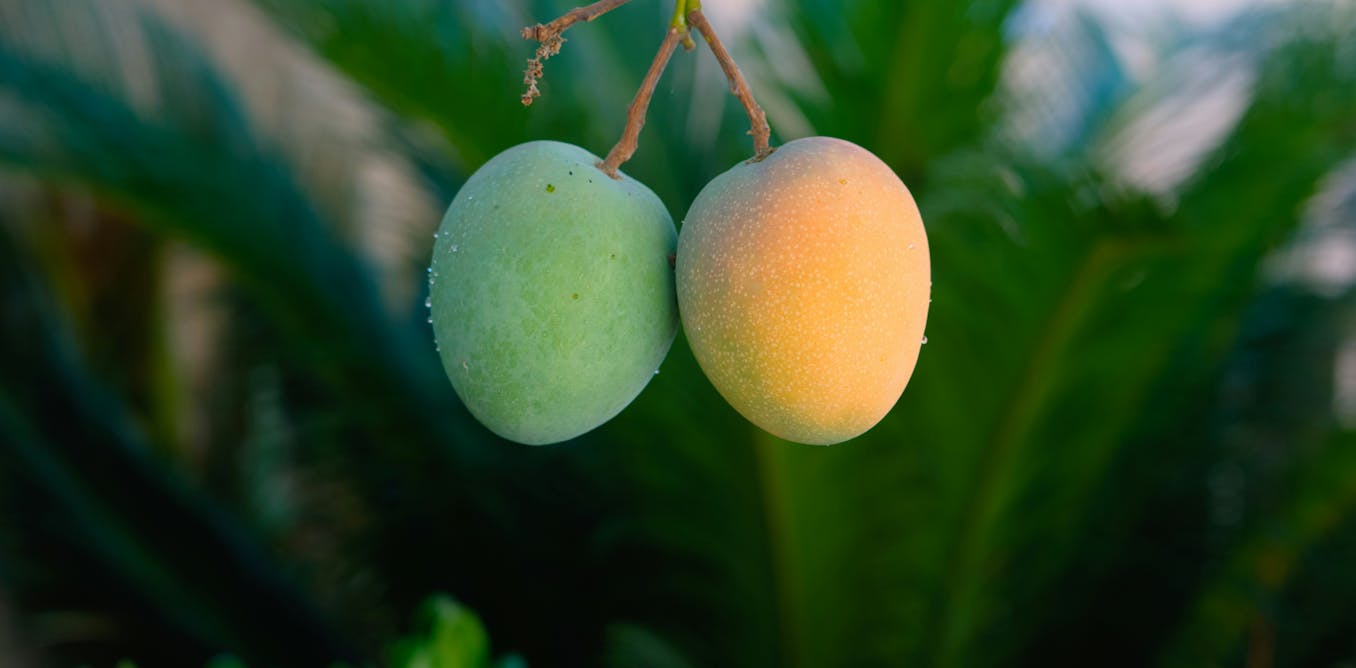The London-based Thai artist embraces the kaleidoscopic effect of memory in a new solo exhibition at Ronchini in London.
Channatip Chanvipava’s approach to his craft is highly personal. His subjects are, in his own words, “explicitly autobiographical and profoundly self-referential”; his practice explores broad themes through the lens of specific experiences and reflections. “My paintings come from the notion of accepting my past, as a way to reconcile with my own truth,” says the artist.
The relationship between memory and truth is the main thrust of “Wizards of Omaha,” Chanvipava’s new solo exhibition on view at Ronchini in London through October 3. The show is curated by Marisa Bellani and follows a recent string of similarly introspective solo shows, including “2 chairs 1 life” (2023) at Roman Road in London, “Spirit Unravelled” (2023) at Monti8 in Latina, Italy, and “The Sound of Many Waters” at Dimora Ai Santi during the 2024 Venice Biennale.
Born in Bangkok to a conservative interfaith family, Chanvipava came to London to attend the London School of Economics, completing his degree in 2016. After a stint at the Royal College of Art in London, he decided to set himself free from the academic system to pursue art as a self-taught artist.

The memory of such experiences — and the paradoxes entailed — are integral to the works in “Wizards of Omaha”; in fact, Chanvipava’s paintings are entirely painted from memory. But whereas the fallibility of memory is at best a frustrating impediment for many artists, for Chanvipava, it is the crux of his approach.
According to the artist, the idea for each painting originates as a series of mental snapshots from his past. Through a process of contemplation and meditation, these granular memories are extensively blurred and distorted, transforming from seminal moments into luminous scenes laminated with personal meaning. Chanvipava creates an imagined abstract collage using mental imagery and then commits these recollected vignettes onto canvas, without any prior drafting or sketching. Working with oils, he attains a sense of dimension with broad brushwork and multiple layers of rich color.
This marriage of intense mental preparation and improvisatory technique is a matrix through which the artist organizes and aligns his experiences, assembling past identities into “a universal truth with courage, hope, and patience.”

The vibrant hues and organic forms that populate Chanvipava’s paintings seem to invoke this sense of idealistic optimism and highlight its tension against the unknown. Take Wizards of Omaha (2024), the massive titular painting that anchors the exhibition: the piece depicts a pair of figures in self-assured repose, evoking “a partnership cemented by wisdom and fortune,” the artist observes. Still, the figures’ amorphous outlines suggest that the nature of the relationship may be more obscure.
The fragmentation of memory is realized through the juxtaposition of realism and abstraction. At the far right of the frame, a set of cups and a glass bottle are visible, rendered in delicate detail. Meanwhile, broad squiggles in blue, orange, and yellow traverse the composition, lending a sense of motion to the scene; a cool green field of a woven check pattern grounds the nebulous scene in geometric regularity.
Green and blue backgrounds reappear in other works to imbue a sense of continuity in Chanvipava’s enigmatic memory palace. The painting If All You Have Is a Hammer, the World Is Your Nail (2024) is of similar scale to Wizards of Omaha and deploys a similar palette of cool tones punctured by flashes of orange and mauve. Here, the subjects are in sharper focus. Two besuited figures stand, staggered, in the foreground; behind them, a black, oblong void appears to open up like the maw of a cave. These elements lend the painting an ominous tone echoed by the work’s title (a nod to behavioral psychologist Abraham Maslow’s “law of the instrument”), but the overall effect is softened by the dynamic, even playful vibrancy of Chanvipava’s brushstrokes.
pmcCnx.cmd.push(function() {
pmcCnx({
settings: {
plugins: {
pmcAtlasMG: {
iabPlcmt: 2,
},
pmcCnx: {
singleAutoPlay: ‘auto’
}
}
},
playerId: “731e4011-ce9c-47d5-aa7f-50d100c2a0fe”,
mediaId: “e4b94825-8d2b-41c2-a48c-b162f65d41c6”,
}).render(“connatix_player_e4b94825-8d2b-41c2-a48c-b162f65d41c6_1”);
});
Some of the smaller-scale works in the exhibition eschew recognizable figures altogether, allowing color to serve as the primary vehicle of expression. Crystal Ball (2024), which recalls a memory set in a fortune teller’s living room, establishes an enveloping aura of pale orange animated by strokes of muted red. Heavy blue structures extend past the edges of the canvas, ballasting the warm-hued composition and suggesting the inaccessibility of the future, while a kidney-shaped form, floating at the top of the frame like a celestial object, brings the other colors into harmony.
This reniform shape is a motif throughout the works in the exhibition. Swimming Naked (2024) serves as the inverse of Crystal Ball, relying on dark hues with bold accents to project a similar message of uncertainty. Yet like the latter, this shape seems to cast warmth over the moody scene from its place in the upper corner.
The warm tenor is a fitting through-line for “Wizards of Omaha,” which arrives as a personal milestone for Chanvipava as much as a professional one. The collected works gracefully espouse themes of blurred identity, the interplay between mysticism and observable reality, and the belief in the power of art, underscoring notions of self-acceptance and a confident orientation toward the future.
“Wizards of Omaha” is on view at Ronchini in London from September 11 to October 3, 2024. See more at Ronchini Gallery site.

The post “Channatip Chanvipava Seeks to Uncover a “Universal Truth” in New Exhibition “Wizards of Omaha”” by John Yan was published on 09/19/2024 by www.artnews.com





































Leave a Reply